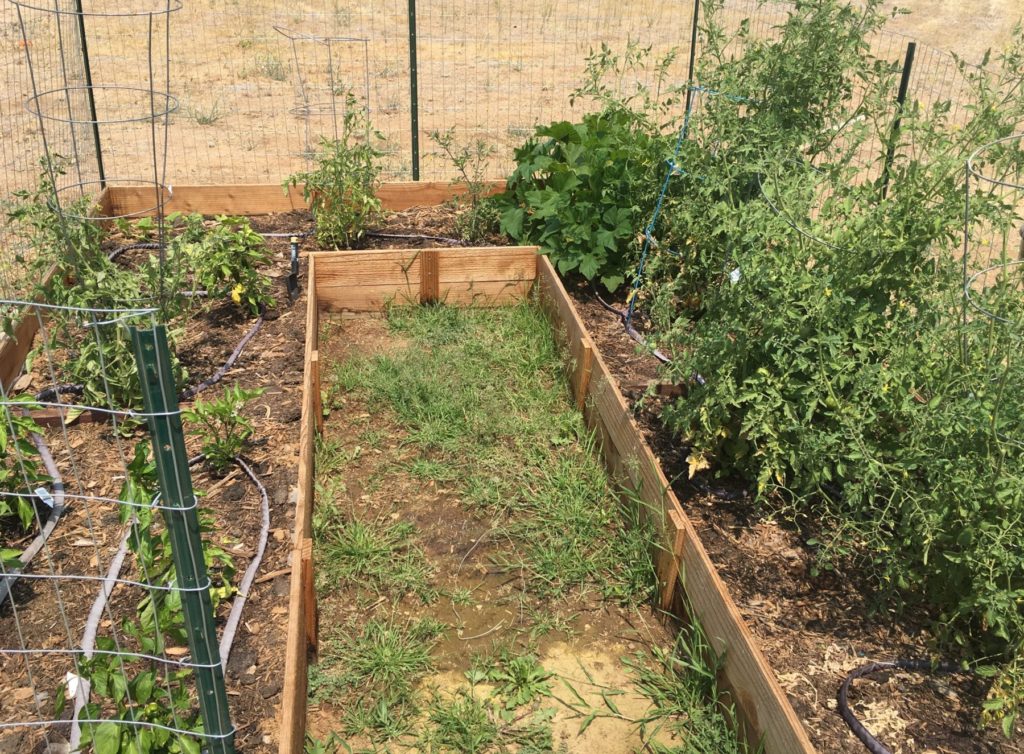Would you love to have a garden, but the thought of digging, weeding, bending, and working a plot sounds like a bit too much? A raised bed might be your perfect solution.
Here are 10 reasons to give raised bed gardening a try.
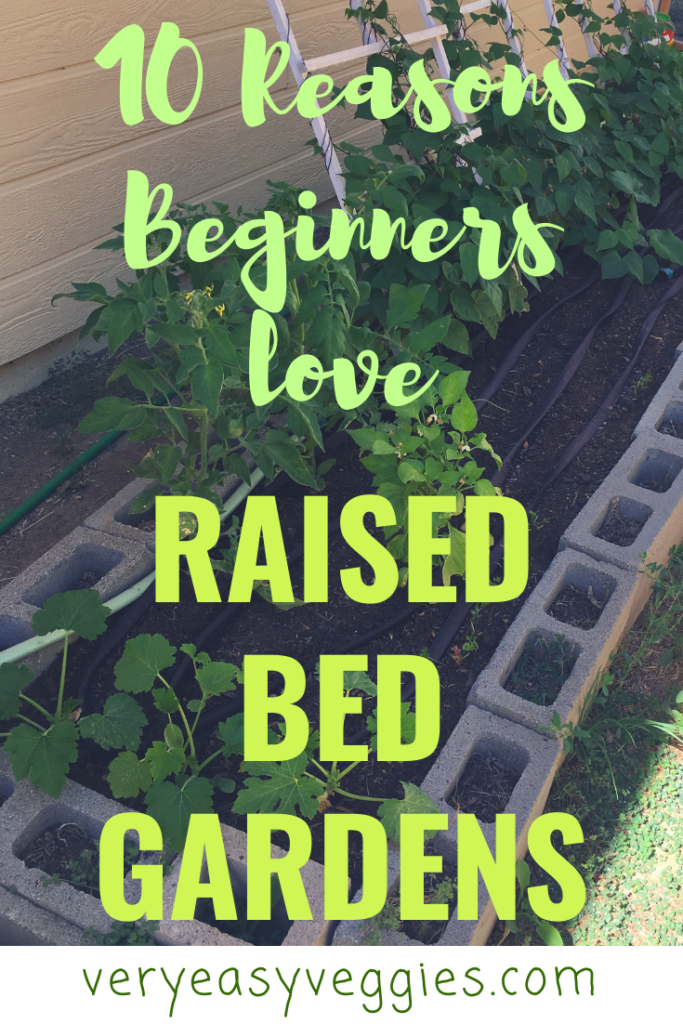
This post contains affiliate links.
1. The Obvious–No Digging
You won’t need a tiller–probably not even a shovel! You may have to level out a spot a bit, but there is no need to dig or till in bags of compost or manure. When it comes time to plant, all you should need is a little hand spade to tuck your plants into the soft dirt. I even used my kids’ sand toy shovel half the time!
2. Escape the earth’s problems
Do you have poor soil, gophers, or are you overwhelmed by the thought of testing your soil and figuring out what to add to make your garden grow well? Raised bed gardening gets you out of all of that. Lay some wire down for gophers, cardboard down for weeds, and start fresh with bagged soil that’s already perfect for growing.
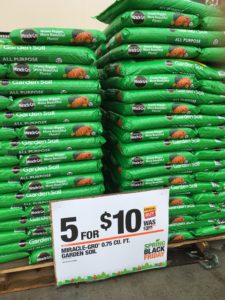
3. Quick Set Up Time
Once you have a good spot that is mostly level and gets enough sun, your set up is pretty simple. Make the walls of your raised bed with wood and screws, a pre-made kit, or even hollow concrete blocks. This tutorial will show you how to make one from cheap cedar fence planks. Add some wire for animals if needed, plus cardboard, soil, and a soaker hose, and you’re all set for the season. You can easily be done in a weekend!
If you want something even quicker and easier, a fabric raised bed like the one below may work great for you–even on a deck or patio. I’ve heard they work especially well for rainy climates.


4. Minimal Weeding
I can’t promise you no weeds, but definitely less. Laying down cardboard under the raised bed and using only packaged soil means that almost no weed seeds can enter, except by wind or carelessness. Those that do come in are much easier to pull because the soil is softer.
5. The Perfect Height
With good soil you really don’t need any more than 9-18″ of planting depth, but you can add gravel or a platform underneath to raise your bed up to the height that is perfect for your comfort.

6. Less Guessing–Perfect for beginners!
Sure, in some ways, gardening is always a sense of trial and error. That’s part of the fun (or so we tell ourselves). But if you’re using only packaged soil in your garden, and especially if you’re using a soaker hose and watering timer, you can really get it set to a pretty fail-proof system!
7. Easy to DIY (even if you’re unskilled or on a budget)
The options, materials, and styles for a raised bed are almost limitless. You can buy a simple kit like one of the ones here (prices vary greatly). If you’re on a budget, you can build your own with free or cheap materials like wood or concrete blocks. I don’t consider myself an expert builder or woodworker, but I could probably figure out how to make a square or rectangle.
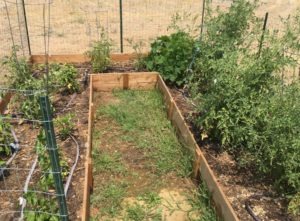
8. No Fertilizing Necessary (Usually)
If you choose the right soil, chances are that you won’t even need fertilizer starting out. Most bagged garden soil contains fertilizer already, and if not, you can just add compost (you can buy that in bags, too). Just make sure the fertilizer numbers on the bag make sense for growing veggies (mostly balanced, first number not too high compared to the middle one).

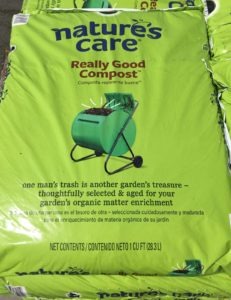
9. Too much rain?
This is not a problem I deal with here in California, but if you get lots of rain (luckyyyyyyy) your garden might get a little too waterlogged. This can actually drown or suffocate roots and make your plants unhappy. Raised beds, perhaps especially with a little gravel underneath and the right soil, can help things drain much better and keep the moisture level more steady. This will keep your plants healthier and your harvest looking much better. Maybe even no more cracking tomatoes!

10. Great for Limited Space
You may not have considered this, but it’s one of my favorite perks of raised bed gardening. Because I know my soil is super rich and nutrient-filled, I can actually use less of it overall. The beds don’t have to be deep, and I can space plants closer because the roots won’t have to compete and fight hard for nutrients and water. I talk about this more in this post.
What does this mean for me? I’ve got about 15 tomato plants growing in a pretty small back yard and there’s still room for my kids to play.
Then again, I might have a bit of a problem.
What are your favorite benefits of raised bed gardening? Or the biggest problems you have that a raised bed might solve? Scroll down and let us know in the comments!
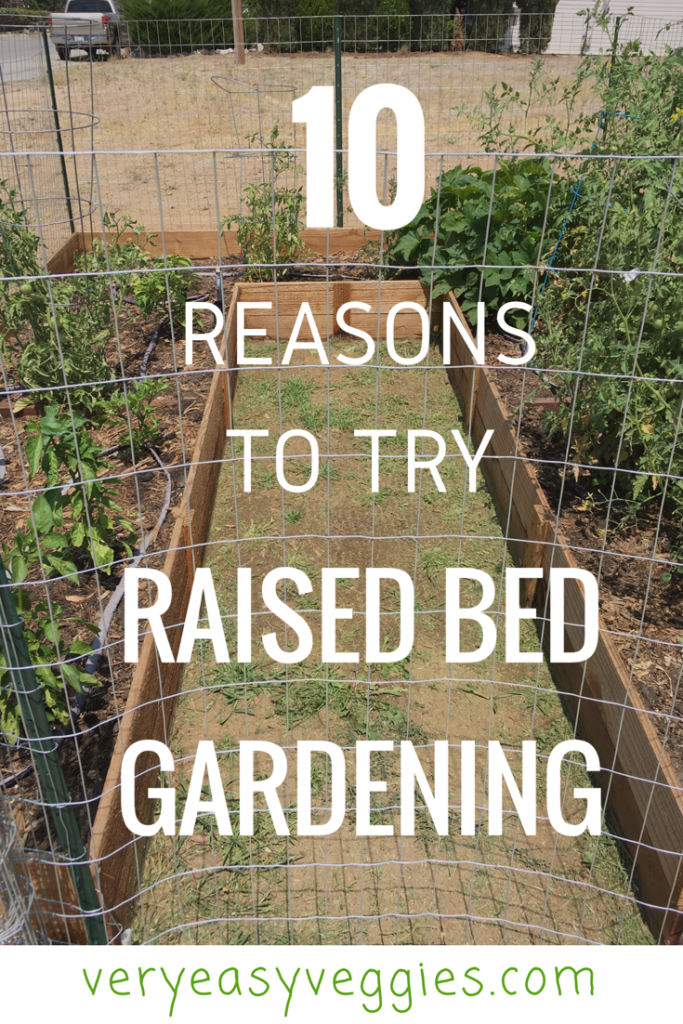
Side note about native soil: Did you know your plain backyard dirt most likely has “problems?” For one, it most likely doesn’t have much nutrition for your plants, but it may also be bad texture (too much clay or sand so that it holds too much water and suffocates roots or dries out too quick). There can even be soil diseases or parasites.
Most of these are not huge issues to deal with if you know a bit what you’re doing or don’t mind trial and error or a bit of lost productivity. But if you like to keep things simple, if you’re a beginner or don’t have time to mess with all of that, it is so much less complicated to just let the pros design your dirt for you. The only problem is that when people share their amazement about how well your plants are growing, you can’t really take credit! I don’t mind though, as long as my plants are happy!
